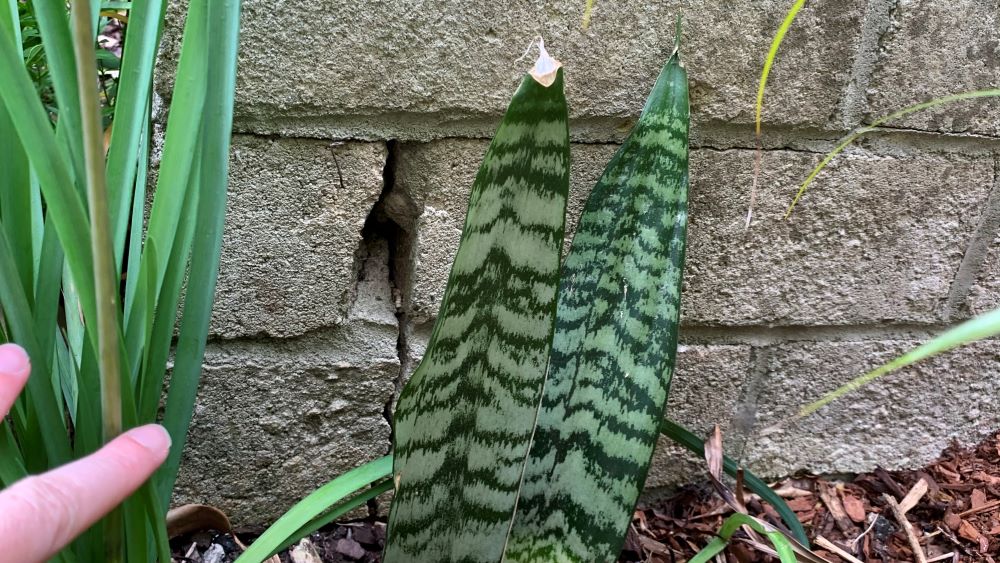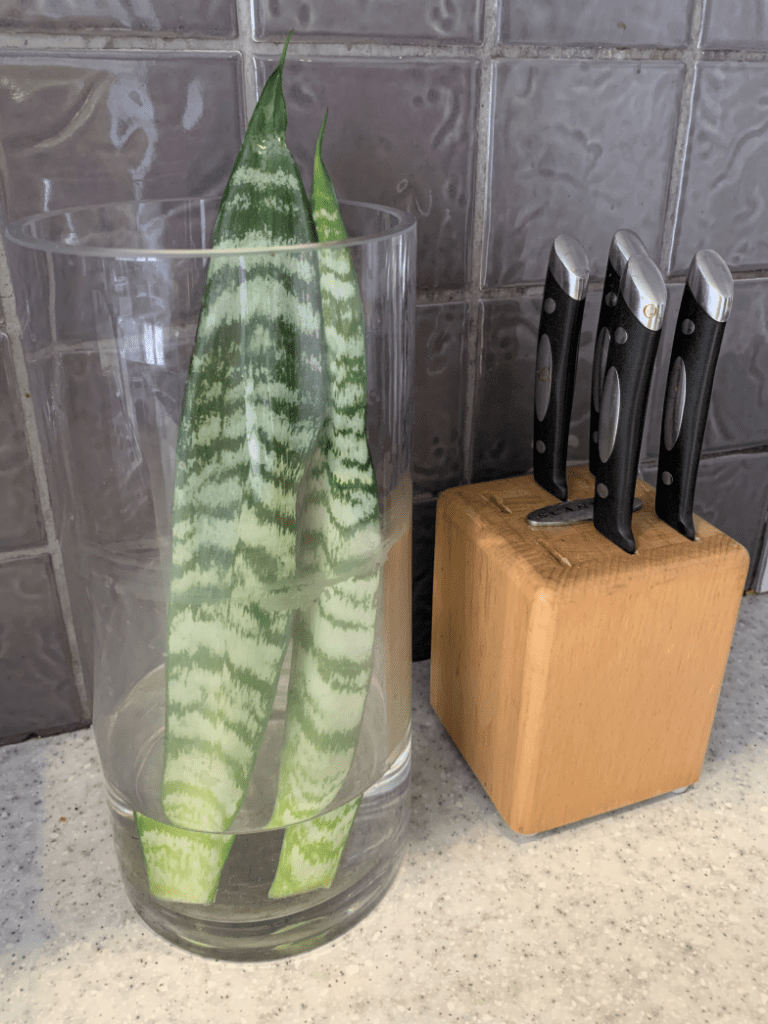Snake plants or sansevieria are great plants but are easily overwatered. This can lead to rotting leaves and brown tips. Reducing the amount of water your plant gets is the solution. You can do this by planting into a pot with lots of drainage, using good quality potting soil and avoiding water sitting in the pot tray.
This article will explore all you need to know about fixing rotting leaf problems on snake plants at home.

Why leaves rot on snake plants
Leaves will rot on your snake plant if the plant is getting too much water. This can happen if there is a lot of rain, if you are giving it too much water, if the soil doesn’t drain well or if the water is sitting the pot tray. When the plant absorbs too much water its roots can rot and the leaves can turn soft, supple and then brown.
You will need to follow some easy steps to help to save your snake plant. A plant that is overwatered for a long time will eventually die so act quick and try these 7 easy solutions.
How to fix rotting leaves on snake plants – 7 Easy Solutions
Here are my top 7 tips for fixing rotting leaves on snake plants.
1. Slow down watering
The first step is to slow down the water you are adding. If you are watering your snake plant more than once per month then reduce your watering schedule. Watering deeply once per month is usually enough to keep your snake plant happy.
If you see your leaves start to turn soft, black or develop brown leaf tips then your plant is probably overwatered.
2. Choose a pot with good drainage
It is very important to make sure the pot your plant your snake plant into has good drainage. It is idea to have at least 5 drainage holes in the bottom of the pot. You can even add holes in the side of the plant for extra drainage.
This will make sure that there is no water sitting in the bottom of the pot. Outdoor snake plants need to be growing in pots with great drainage especially if you get high rainfall. We live in a subtropical area with high summer rainfall and my snake plant in a pot still grew well. I have planted mine in the ground now to help it to grow larger.

3. Plant in good quality potting soil
Choosing good quality potting soil for snake plants is important for drainage and to avoid rotting leaves on snake plants. You don’t need to choose a succulent soil but a good quality all-purpose potting soil is perfect. This will be high in organic matter and drain well.
You can also add some perlite to help the soil to drain even better. Perlite is a mineral rock like substance that is baked and puffs up like rice bubbles. This adds air and allows water to drain through the soil easily.
4. Trim off dead and damaged leaves
To help your snake plant to recover it is best to trim off very damaged leaves. Any leaves that have started to turn brown and dry can be trimmed. Once the leaf is at least 30% damaged, it is best to remove it to allow the plant to grow new leaves to replace them.
Leaves with only a small amount of damage can actually recover. Soft leaves can recover if the watering is reduced.
5. Empty the pot tray
It is important to make sure that the pot tray is always empty of water. Trays are great for catching drips but you should never have it filled with water. This will cause your snake plant to become overwatered and can damage the leaves.
After you water your plant always let it drain completely before returning it to the pot tray. This will avoid the plant sitting in water, absorbing too much and rotting the leaves.
6. Use an inner and outer pot for indoor plants
The best way to avoid rotting leaves and overwatering on indoor snake plants is to use an inner and outer pot. What this means is to plant your snake plant in a regular, plastic pot with at least 5 drainage holes. You can then place the pot inside an indoor pot. These pots will not have drainage but will catch any drips from the inner pot.
This is the perfect way to avoid overwatering as you can take the inner pot out to water it. Allow the plant to drain well before returning to the outer pot.
7. Repot into fresh soil
You can repot your snake plant into fresh potting soil to help it recover from soggy leaves. If the soil is very wet, won’t dry out and is growing mold it is better to repot it to help it to survive. Simply tip the plant onto its side and gently pull it out of the pot. Let the extra soil drop off the plant from around the roots.
You can then repot the plant into a new pot with fresh potting soil. Choose a premium potting soil which will have lots of organic matter and will drain well. Take care not to press the soil down to hard to reduce the amount of air.
Water the plant well to let the soil settle around the roots of the plant. Wait for around 4 weeks before watering again.
How to Fix Snake Plant Rotting Leaf Problems | Summary
Snake plant leaves can rot if the plant is getting too much water. You can fix this problem by reducing your watering schedule to once per month, repotting the plant into a pot with good drainage and using fresh potting soil. Avoid leaving the pot sitting in a tray of water as the soil will become too wet and can cause the leaves to rot and become soggy.
Happy growing.
I am an accredited practicing dietitian, experienced gardener and a dedicated cook. I love writing and sharing my experience so you can learn from my successes and mistakes.
